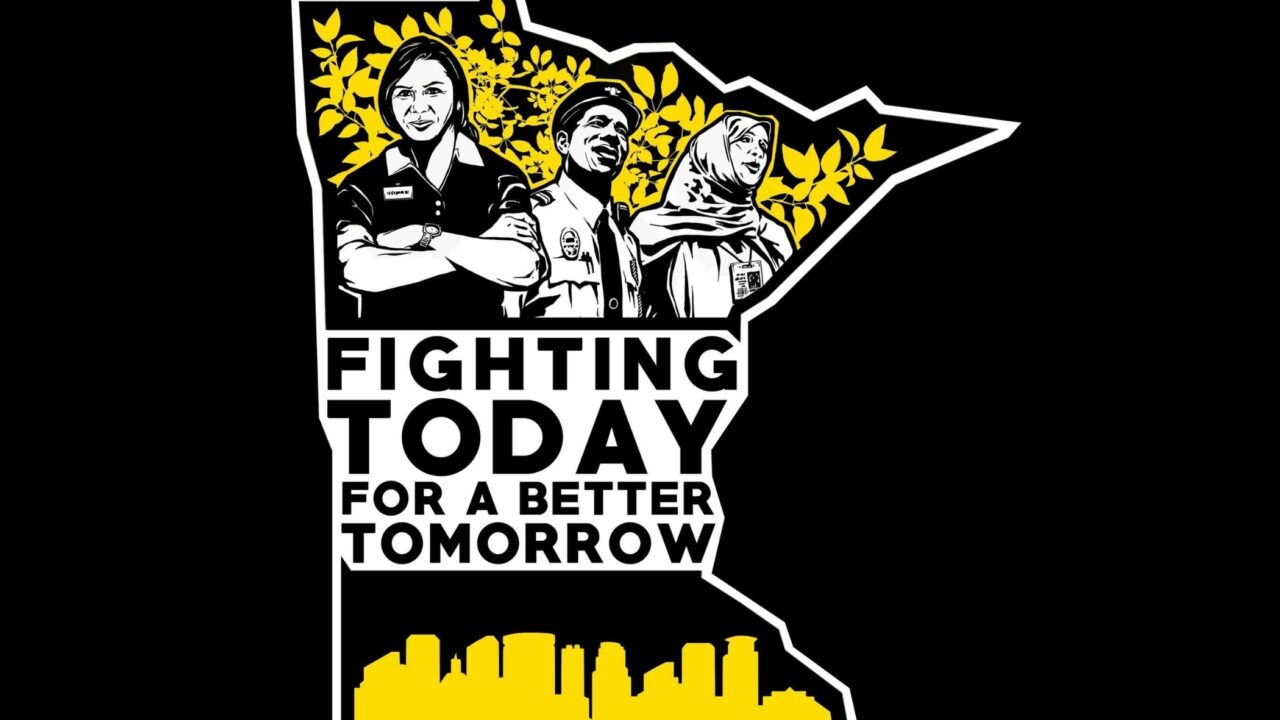For decades, community organizing avoided electoral politics. Groups protested injustice and engaged in issue advocacy, bringing pressure to bear from the outside. Most steered clear of the ‘inside’ work of governing, and the compromises that entails.
While so many of our forces were focused on protests and issue campaigns, forces on the Right were building power in multiple arenas: making major electoral, legislative, administrative, and judicial gains, advancing their neoliberal agenda, and gaining control of the political agenda and dominating the political narrative. The havoc they’ve wreaked – culminating with the 2016 national elections – convinced even the most skeptical hold-outs to take elections more seriously. Now the need to not only beat back the Right but to seize the levers of power is top of mind for organizers across the country.
The Grassroots Power Project has been working with groups on the ground for more than 20 years, helping them analyze, test, and refine their organizing practice. We have long-lasting relationships with organizations, “accompanying” them as they go through the process of developing long-term strategies to win structural change. Out of that work, and alongside grassroots leaders, we have developed a set of tools and concepts that we think can help groups make shifts toward gaining governing power: moving past the limits of being only protesters on the outside into actually making the decisions about our communities’ future.
Today, we see power-building organizations across the country – from California and New York to Florida and Colorado – talking about how to contest for “governing power.” This gives us reason to hope that social justice forces will make significant gains in the years ahead.
We wrote Governing Power for organizers who believe that we, as a movement, need to contest for power at a much greater scale. Our book is meant for people who may be skeptical of electoral politics but who recognize that we need to control the levers of power as they exist today and create new levers and structures of governance if we are going to achieve the kind of transformational changes that our people need. We include examples of ongoing work that is oriented toward gaining governing power. These help us link our conceptual definition of governing power to our best thinking on the practical shifts that organizations need to make.
Defining Governing Power: We define governing power as “the ability to win and sustain power within multiple arenas of decision-making so that we can establish a new “common sense” of governance that replaces neoliberalism and ultimately shift the structure of governance itself. Said another way: To win governing power, we need the capacity to design, drive demand for, legislate, enforce, and defend a structural reform agenda that serves the interests of our people (rather than the wealthy few). Over time, this will enable us to reshape the structure of the government itself, so that it can advance democratic control, redistribution and reparation. To do that, we need to build power in a much more expansive way, reaching into new fronts of struggle that we do not often consider, while also significantly shifting our approaches to our work.
Fighting on All Fronts: Community organizing has tended to focus on one arena of struggle: the legislative realm. A “governing power” approach requires us to build power in a number of other arenas as well. We built on the “multiple arenas” framework developed by Manuel Pastor, Jennifer Ito and Madeline Wander in Changing States. These arenas include:
-
Legislative arena: where elected leaders convene to create or change laws
-
Electoral arena: where voters have a direct say in who is elected to public office or where voters directly approve or reject laws by referendum.
-
Administrative arena: where the directives of the electoral and legislative arenas are transformed into actionable rules and where the process of implementation is shaped.
-
Judicial and constitutional arena: where laws and rules are interpreted and applied.
-
Worldview: where different ideological and political interests deploy narratives to shape popular values, beliefs, and what we come to understand as “common sense.”
-
Economic arena: where our wages, work-life and consumer choices are decided, and where decisions are made that shape our communities through investment and development
The practical work of power-building takes different forms in each of these arenas, and affecting real change often requires building power in multiple arenas. For example, many community organizations have already recognized that we cannot limit our work to the legislative arena, given the unfavorable balance of power that they have encountered. So they have taken up the work to build power in the electoral arena in order to reshape that balance of power.
In recent years, workers’ centers and some unions have turned to the legislative arena to raise standards for low-wage workers in industries whose structures and working conditions make unionization difficult. Here, we can point to the Domestic Workers’ Bills of Rights that have passed in many states as well-known examples. These campaigns have had a strong focus on the legislative arena, with worker-leaders laboring hard to convince legislators to include workers who have previously been excluded from basic standards and to raise the floor of those baseline standards. Fight for $15 campaigns have also pushed to change laws – and they have had to take their proposals directly to voters via ballot initiatives.
This crucial, inspiring work has demonstrated the importance of connecting this work in the legislative arena to work in the administrative arena, in order to ensure the enforcement of the standards that have been passed through legislative processes. There have been experiments with strengthening the hand of government agencies, collaborations between workers organizations and government agencies, and direct enforcement by workers organizations. There have also been inroads to developing methods to build worker governance in the economic arena, giving workers a more direct voice in setting standards in their industries. Examples include the fights over the Fast Food Councils in California, domestic workers standards board in Seattle and a nursing home workforce standards board in Minnesota. While these examples don’t reflect the end of the journey towards gaining governing power, they do reflect a clear orientation to moving in that direction.
Shifts in our Organizing:
We see five key shifts that organizers need to make to contest for governing power.
1. From a Target-focused Power Analysis to a Governing Power Analysis: In our campaigning, we are used to doing power analyses to identify a target and to map the relationships that influence that target. A governing power analysis asks a broader set of questions about the political and economic terrain so we can understand who currently governs in our states. For example, what individuals and corporations wield power in our state? What think tanks, advocacy groups and political entities do they fund? How are they shaping the political agenda?
2. From Short-Term Campaigns to a Long-term Governing Agenda: We need to build on the important work of waging short-term campaigns towards the long-term work to develop governing agendas that point the way toward the transformation of government and the economy.
A long-term governing agenda has three elements: 1) It identifies stepping-stone campaigns that lay the groundwork to win larger milestones over time. 2) It includes a plan to build durable power year after year, which motivates broader base-building and deeper leadership development. 3) It encourages us to embed power-building and enforcement into the policies we fight for, so that we grow stronger as we fight and win. This approach helps us to ensure that our campaign wins are not one-offs. Instead, they play a central role in expanding our power year over year.
3. From Tactical Messaging to Leveraging Narrative to Reshape Common Sense: Our opposition has invested heavily in reshaping the public narrative to celebrate the role of the private market and to undermine belief in the common good. We need to make real investments in the work to understand the dominant narrative and reshape common sense ideas, especially around the economy, the role of government and race. This is a vast area of work, which GPP has explored for many years and which many organizers have advanced significantly in recent years. Two examples stand out:
- The deep investments in narrative change made by the organizers who built the successful Invest in Our New York campaign, which won more than $4 billion in new revenue for that state. Recognizing that they needed to directly confront anti-tax narratives if they were going to move a transformative policy agenda, they built a strong communications plan to shift the narrative and – importantly – also embedded these narratives into their demands, their actions and their base-building work.
- Greater Than Fear, an effort in Minnesota that built on the work of the Race-Class Narrative to challenge the divide and conquer politics of right-wing populism. By providing an expansive narrative uniting voters in urban and rural areas across race and economic class, Greater Than Fear played an important role in the 2018 midterm elections that saw progressives make gains nationally and in the Minnesota state legislature.
4. From Winning One-Off Elections to Developing Independent Political Infrastructure and Co-governing: As organizers, we are so accustomed to resisting people in power that we often can’t help but see people in public office as anything other than targets. To advance our governing agenda, we cannot treat public officials solely as opponents; we have to cultivate supportive, cooperative, and mutually accountable relationships with people in positions of authority who share our deeper agenda. To do this, we need to cultivate a deeper bench of leaders who can step into public office and with whom we maintain deep collaborative relationships. Secondarily. We have to have a strategic approach to relationships with officials who are not entirely with us. In addition, our grassroots organizations need to create political entities that are accountable to us and that allow us to shift from being foot soldiers knocking on doors to strategists who shape electoral strategies for the long-haul. These are the building blocks of what has come to be referred to as “co-governance.”
5. From Narrow Base Building to Building Majoritarian Power: If we aim to not only gain control of the levers of government, but also create new structures that better serve our people, we will not succeed with a militant minority. Large-scale change requires significant majorities. This is a stark departure from the advocacy-based approach where spokespeople tell their story to encourage decision-makers to make the right choice. Real majorities are built on a foundation of powerful and strategic organizations that empower grassroots leaders to do the work of organizing so that they can represent whole constituencies. They require these organizations to build broader united fronts that will include allies who disagree with us on issues and strategies, and to navigate the dynamic tension between the work of building shared interest across different communities of poor and working people, while also honoring and attending to real differences based on race, gender, geography, immigration status and more. We realize that this approach is a massive undertaking that requires years of diligent and difficult work. However, we argue that it is worth it to take on these huge tasks, since it is the only way to build the kind of power we need to set a governing agenda and to win.
This shift may represent the greatest change in approach for many of our organizations, and we are heartened by the progress toward majoritarian power that we see emerging among alignments of power-building organizations in several states.
To give an example of these shifts in practice, we want to lift up the work of Rise Up Colorado to develop a governing power analysis. Rise Up Colorado is an alignment table that has been steadily building relationships among some of Colorado’s strongest power-building organizations since its formation in 2016. Its current membership includes several community organizations and their associated c4 organizations: Together Colorado (an affiliate of Faith in Action), Movimiento Poder (a community organization rooted in Denver’s working class Latinx communities), United for a New Economy (an affiliate of PowerSwitch Action and Center for Popular Democracy), Colorado People’s Action (an affiliate of People’s Action), and 9to5 Colorado. The alignment also includes SEIU Local 105, Colorado WINS, Colorado Education Association, Colorado AFL-CIO, and the Colorado Working Families Party.
In 2021, Grassroots Power Project launched a governing power analysis process with Rise Up Colorado to help its member groups to better understand the forces they were up against and what they would need to do to defeat them. This went beyond a typical target-focused analysis that might have asked, “which party is in control?” or “which target has the power to give us what we want?” The Rise Up groups knew they would need to learn much more about the agendas of the people and institutions who surrounded, influenced and funded their targets.
Researchers helped the table to identify the wealthiest donors and corporations in the state and to examine how they moved their money through various philanthropic foundations and political entities. They found that the super-wealthy had invested in six key corporate, conservative organizations: Colorado Chamber of Commerce, the Denver Metro Chamber of Commerce, Colorado Concern, Colorado Business Roundtable, Colorado Succeeds and the Common Sense Institute. Rise Up decided to focus its research on these organizations and on the key fights in which these organizations were engaged. They found that the organizations were working to shape policy around a wide range of issues that included labor, education, criminal justice, environment and the economy. Researchers also analyzed the Colorado general assembly, including the demographics and voting trends of each member district. They highlighted districts that were poised to shift from either “toss up” to “light blue” or from “light blue” to “dark blue” in upcoming elections. This helped them to identify the districts that might be prime places for Rise Up to consolidate working class, multi-racial voting blocs, and to launch primary election battles against corporate-aligned Democrats.
The governing power analysis that the Rise Up groups conducted clarified that the corporate elite is the primary opposition that Rise Up must work together to combat if they are going to advance their agenda in Colorado. The analysis also provided greater insight into what working people’s organizations must do if they are going to win the power they need to set the agenda.
In Closing: We wrote Governing Power as a reflection on the inspiring work that organizers around the country are doing today. We hope that it serves as an effective mirror to those organizers and as an agitation for strategists who want to contest for power at a new scale. If we – as organizers – build on that work to pursue governing power, we can move past the limits of being only protesters on the outside and move into actually making the decisions about our communities’ future.
We want to be clear-eyed that the forces we are up against will remain formidable even if and when we gain governing power in more cities and states. We will hit up against the limits imposed by the power of corporations and billionaires and, beyond that, the systemic demands of the racial capitalist economy. Leaps forward may be followed by steps backward. As we win significant victories, we will need to address these dynamics and engage with our forces so that they don’t become disillusioned. If we set our course in the direction of governing power, we will be able to navigate these back-and-forth dynamics as we advance towards a future where our deepest dreams can be made real.


